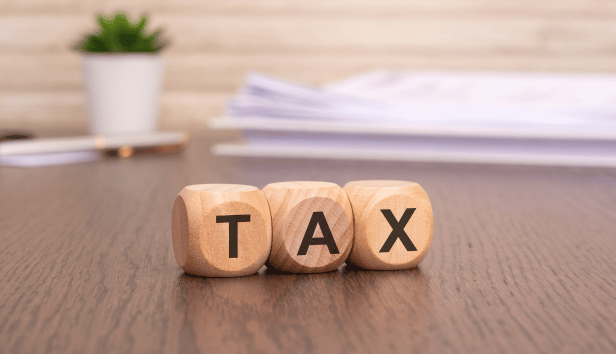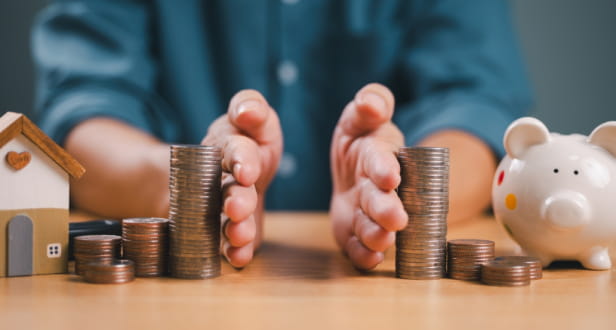
This article is for general guidance only and is not financial or professional advice. Any links are for your own information, and do not constitute any form of recommendation by Saga. You should not solely rely on this information to make any decisions, and consider seeking independent professional advice. All figures and information in this article are correct at the time of publishing, but laws, entitlements, tax treatments and allowances may change in the future.
Over the last two years, the amount of money you can make on assets before needing to pay Capital Gains Tax (CGT) has been slashed from a high of £12,300... to just £3,000. However, with some smart planning, there are ways to trim your CGT bill – or eliminate it completely.
Shaun Moore, Tax and Financial Planning Expert at Quilter, says: “HMRC projects that the reduction of the AEA [annual exempt amount, which is effectively your tax-free allowance] from £12,300 to £3,000 will affect 570,000 individuals and trusts.
“Of this group, hundreds of thousands of people will become liable for CGT for the first time in the current tax year and could be caught out if they don’t pay close attention to their gains.”
Making matters worse is the fact that since these allowances were cut, the rate of CGT has also increased on assets including chattels and shares. The move brings them into line with rates charged on residential property that isn’t your main home (such as holiday homes or buy to lets).
In the Autumn 2024 Budget the rate of CGT (for assets excluding residential property) increased from 10% to 18% for those that remain in the basic rate tax bracket once their taxable gain is taken into account and from 20% to 24% for higher and additional rate taxpayers (rates on property were already taxed at these rates).
The good news is that money you’ve got invested in pensions and ISAs is exempt from CGT. However, it could be payable when you sell (or give away) other assets like shares and funds in a general investment account, or a property that isn’t your main home.
Sarah Coles, Head of Personal Finance at Hargreaves Lansdown, says the changes mean many ordinary investors could be in for a surprise when they sell assets.
“CGT isn’t something you hear much about, so it can come as a shock when people end up with a bill. The last year we have figures for was 2022/23, when £14.4 billion was paid in CGT.
“This is almost twice as much as the record inheritance tax we paid in 2023/24, of just over £7.5 billion, which far more people are concerned about.”
Sales of investments (like shares and funds) account for the majority of CGT paid in the UK. By far the easiest way to shelter these investments from tax is to hold them either in an ISA or a pension.
Each year you can invest up to £20,000 in ISAs and 100% of your income (up to £60,000) in pensions, although that figure does drop to £10,000 if you’ve already made a taxable withdrawal from your pension.
Money held in ISAs is sheltered from tax as it grows, so it's a great place to start if you want to protect yourself from future CGT bills.
Income from pensions, on the other hand, is taxable, but you do get the benefit of tax relief on contributions when you pay it in – meaning the money you would have paid in tax to the government goes to your pension instead.
Things get a bit more complicated if you’ve already got investments or shares held in general investment accounts.
It’s also trickier if you have property that could be subject to CGT (for instance, a second home or a buy-to-let property), as you can’t shelter them in the same way.
However, depending on your circumstances and the assets you have, there may still be options.
.jpg?sc=max&mw=800&h=450&la=en&h=731&w=1300&hash=A9BC3E52B64F3E0E25C86B8ECD928BA8)
If you have shares or funds that could be liable for CGT, it makes sense to regularly use your annual allowance. “Without yearly management, gains can unexpectedly creep up on investors,” says Moore.
“Let’s use the example of someone who opened a general investment account 10 years ago, when the AEA [annual exempt amout] was £11,100.
“Since then their investments make modest gains, averaging out to £800 a year, so they assume they won’t be affected by CGT because their yearly gains are significantly below the AEA.
“Fast forward to 2024 and their total gains now amount to £8,000. On top of that, the AEA has been slashed to £3,000.
“Gains are only counted for CGT purposes when you sell an asset. This means that if they decide to sell all their shares in the 2024/25 tax year, they will only benefit from the £3,000 exemption once, paying CGT on the remaining £5,000 in gains.
“For all intents and purposes, this means that the nine years of tax exemptions that they could have utilised between 2014 and 2023 were wasted.”
Had this investor been aware that they had a CGT bill brewing, they could have taken advantage of the AEA by selling shares incrementally over the years.
Even better, once you have sold shares or investments, you can then move that money into an ISA, using so-called ‘Bed & ISA rules’ (so long as you have enough ISA allowance remaining).
In this case, it involves selling investments that may be liable for CGT and immediately rebuying them within your ISA.
With a Bed & ISA, the 30-day rule (which prevents you selling shares to avoid paying CGT and immediately buying them back) doesn’t apply, as the ISA protects your investment from future tax.
Many investment platforms offer Bed & ISA services. However, if you aren’t sure what to sell (or how much), or just find the process a bit unclear, it makes sense to get help.
Moore says: “The process of switching out shares requires careful planning, so it is highly recommended to seek professional financial advice if you are considering this strategy.”
If you’re married or in a civil partnership, it’s also possible to transfer assets to your partner tax free.
This strategy can be particularly helpful if you’re trying to reduce your tax bill when you’re selling a property – which can be tricky.
Coles says: “If you’re investing in property, there’s very little you can do. It’s difficult to sell up in chunks, so you end up making all the profit in one big lump sum, and so after the first £3,000, you’ll pay tax on the rest of it.”
Those that are married or in civil partnerships can take advantage of tax-free transfers between spouses. “You can transfer the ownership of some of the property to your spouse or civil partner,” she explains.
“There’s no CGT to pay on the transfer. When they sell up, there may well be tax to pay, and the gain will be calculated by comparing the cost on the day of selling with the day when their spouse or partner originally bought the asset.
"However, they have a CGT allowance of their own to take advantage of, so a chunk of the gain won’t be subject to tax. If they’re taxed at a lower rate, they may also pay any CGT at a lower rate too.”
Nobody likes making a loss on an investment, but it’s important to note that you can use losses to offset the size of your capital gain – and reduce the amount you need to pay.
Coles says: “You can offset any capital losses you make during the tax year against gains. If your total taxable gain is still over the tax-free allowance, you may be able to deduct any unused losses from previous tax years.
“If just some of your losses reduce your gain to below the tax-free allowance, you can then carry forward the remaining losses to a future tax year.”
The combination of lower tax-free allowances, increased CGT rates and the fact that income tax thresholds have been frozen until 2028 (resulting in something called ‘fiscal drag’) mean that not only are more people having to think about CGT, but those that are paying it will have to stump up an increased amount.
For some, especially those selling a single asset in one go, it may be reasonably straightforward to calculate a CGT liability and find ways to reduce your tax bill.
However, if you have lots of investments and have built up a liability over time, it’s likely to be more complicated, in which case getting professional financial advice could be a very sensible investment in itself.


We're here to help you make the most with your money. With a rage of financial services designed with over 50s in mind.



There’s billions sitting unclaimed in shares and dividends – find out if any belongs to you.

/mature-couple-looking-at-taxes.jpg?la=en&h=650&w=1400&hash=5CFABEEDC751F26D56DD3E85749E3C36)